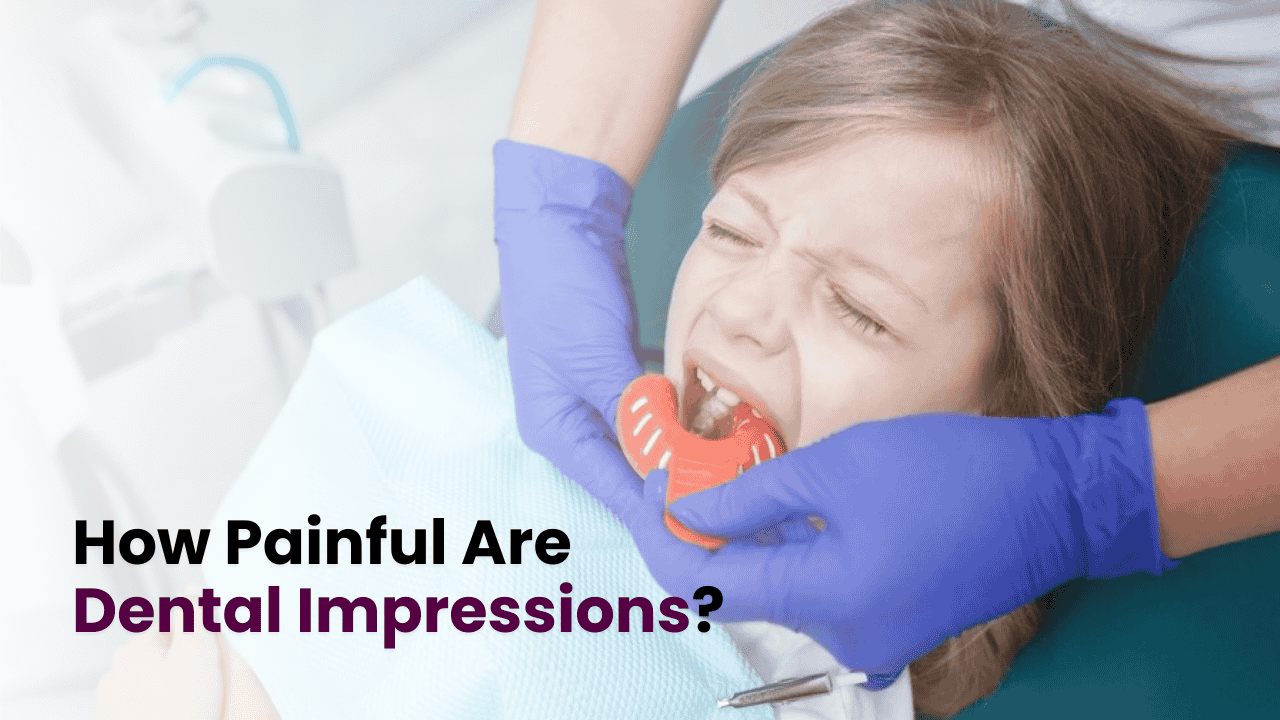
How Painful Are Dental Impressions? What You Need to Know
Dental impressions are a routine part of many dental treatments, whether you’re getting braces, a crown, or other dental restorations. For patients who have never had dental impressions before, it’s common to wonder, “How painful are dental impressions?” In this article, we’ll explore everything you need to know about dental impressions, the discomfort level, and how to make the process smoother.
What Are Dental Impressions?
Dental impressions are molds made of your teeth, used by dentists to create a detailed replica of your dental structure. This is essential for various dental treatments, such as the fitting of crowns, bridges, dentures, or orthodontic appliances like clear braces or traditional ones.
When getting dental impressions, a dentist will place a soft, pliable material—often alginate or silicone—onto your teeth to capture the shape of your upper and lower arches. These impressions are then sent to a lab where custom dental solutions are created.
Read More: Six Common Myths About Clear Aligners
How Dental Impressions Are Taken
To understand how the process works, it’s essential to know the steps involved in creating dental impressions:
- Preparation: Your dentist will prepare the impression material, which can either be a putty-like substance or a liquid.
- Placement: The dentist will ask you to bite into a tray filled with the impression material. For some impressions, they might need to take both an upper and lower impression of your teeth.
- Setting Time: The material will set and harden within a few minutes, capturing the exact shape of your teeth and gums.
- Removal: Once the material has hardened, the dentist will remove the tray, and the impression is complete.
How Painful Are Dental Impressions?
Discomfort vs. Pain: What to Expect
Dental impressions are generally not painful, but they can be uncomfortable for some patients. The sensation is often described as pressure or a feeling of fullness in your mouth. However, there are a few factors that might contribute to discomfort during the procedure:
- Gag Reflex: One of the most common issues people face during dental impressions is the gag reflex. For patients who have a sensitive gag reflex, the feeling of the impression material in the back of the throat can trigger nausea.
- Pressure on Teeth and Gums: The impression material molds around the teeth and gums, which might cause a sensation of pressure, but it’s usually tolerable. If you experience pain, let your dentist know immediately.
- Duration: The length of time the material remains in your mouth might contribute to discomfort, especially if you’re feeling anxious.
Tips to Minimize Discomfort
- Relax and Breathe: Try to stay calm and breathe slowly. Tension can make the process more uncomfortable.
- Talk to Your Dentist: If you have a sensitive gag reflex or anxiety about the procedure, inform your dentist. They may use techniques to help reduce discomfort, such as using a smaller tray or offering short breaks during the procedure.
- Use Numbing Gel (If Necessary): Some dental offices may use numbing gels to ease any discomfort during the process, especially if the impression involves a more invasive procedure like an impression of the upper mouth.
Read More: How Long Do Aligners Take to Work?
Are Dental Impressions Safe?
Yes, dental impressions are safe when performed by a trained dental professional. The materials used are designed to be non-toxic and are carefully selected to ensure that they won’t cause any harm or discomfort.
Alternatives to Traditional Dental Impressions
Digital Impressions
For patients who are concerned about the discomfort of traditional impressions, digital impressions offer a modern solution. Using advanced technology, a dentist can capture a digital image of your teeth without the need for impression material. Digital impressions are quick, comfortable, and accurate, making them an excellent choice for patients looking to avoid traditional molds.
Invisible Aligners
If you’re undergoing orthodontic treatment, invisible aligners like ClearPath Orthodontics can be an alternative to traditional braces and dental impressions. Aligners are custom-made based on 3D scans of your teeth, and since they are clear and removable, they offer a comfortable and discreet option for teeth straightening. Not only do they eliminate the need for physical dental impressions, but they also provide the added benefit of being more aesthetically pleasing and comfortable.
Benefits of Clear Aligners and Invisible Braces
Clear aligners, such as those offered by ClearPath Orthodontics, are an excellent option for patients looking to straighten their teeth without the discomfort associated with traditional braces. Here are some key benefits:
- Comfortable Fit: Clear aligners are made from smooth plastic, which is gentler on the gums and mouth than traditional metal braces.
- Removability: Aligners can be removed for eating, brushing, and flossing, making them more convenient than traditional braces.
- Discreet Appearance: Invisible aligners are virtually invisible, allowing patients to smile with confidence during treatment.
- Customizable Treatment: Aligners are made using precise digital scans, meaning the treatment plan is personalized for your specific needs.
Read More: Can You What is Orthodontic Headgear
Conclusion
Dental impressions are an essential part of many dental procedures, and while they may cause some discomfort, they are generally not painful. The process is quick, and with proper communication with your dentist, any discomfort can be minimized. If you are concerned about the traditional impression process, you might want to consider digital impressions or clear aligners as an alternative for orthodontic treatment. ClearPath Orthodontics offers a range of solutions, including invisible aligners, that are both comfortable and effective.
For more information or to schedule a consultation, contact ClearPath Orthodontics at 042 111 333 276 or visit our website at ClearPath Orthodontics.
FAQs
Yes, dental impressions are typically required to create custom braces or aligners. They help the dentist design a treatment plan based on the unique shape of your teeth.
The process of taking dental impressions usually takes about 10 to 15 minutes, depending on the complexity of the treatment.
Yes, if you have a sensitive gag reflex, talk to your dentist beforehand. They can take steps to help you feel more comfortable during the procedure.
Traditional impressions involve molding material to capture the shape of your teeth, while digital impressions use advanced technology to create a 3D scan of your mouth, offering a more comfortable and accurate alternative.
Invisible braces, like ClearPath Orthodontics, use clear aligners made from smooth plastic to gradually move your teeth into the desired position. They are custom-made based on digital scans of your teeth and are comfortable, discreet, and removable.
